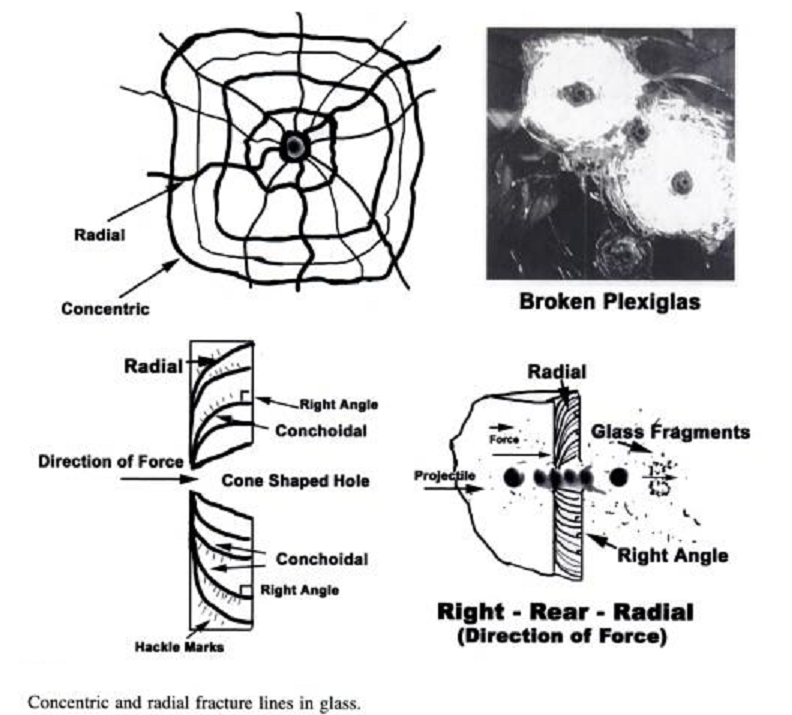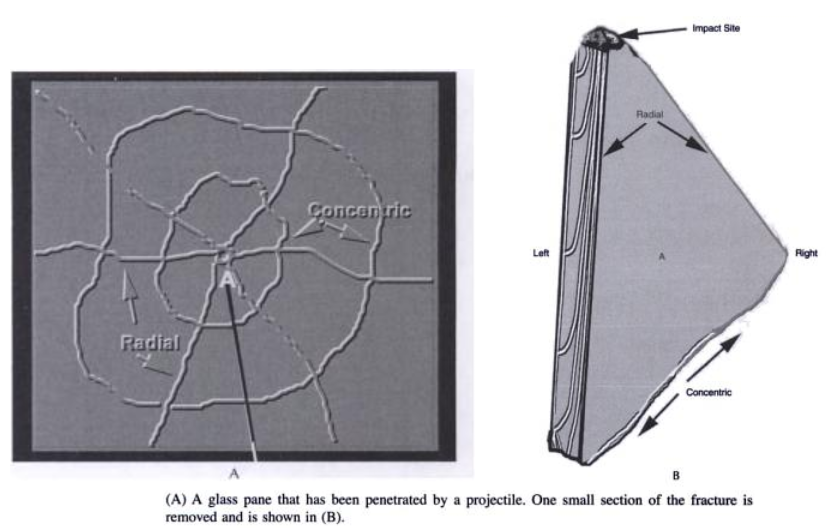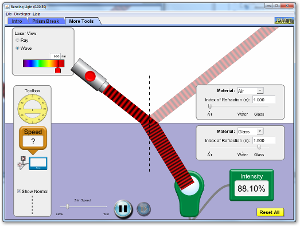Glass Fracture and Fragments
|
Glass Analysis
When a force is applied to a glass object it will bend until it reaches its elastic limit. After the object has reached its elastic limit, the force will produce fractures and/or breaks in the glass. The first task is to determine what type of object caused the damage to the glass. Examination of the hole (if there is one) will identify whether the object was a low velocity or high velocity projectile. A bullet at high velocity produces a hole in the glass where the exit side is wider than the entry side. A low velocity bullet hole will exhibit more shattering around the hole and the hole may be irregular in shape. Sometimes stones at high speed (coming off of a tire) may cause damage to glass that mimic bullet fracture patterns. Therefore, it is important to care fully search the area of the crime scene for other evidence in order to determine what caused the breakage. The window can also be tested for gunshot residue or metal residue. Conchoidal (shell-like) fracture patterns in the glass are the result of stress on the glass and breakage due to application of a force. The two types of conchoidal fractures are radial and concentric. Radial fractures extend outward in a line from the point on the glass where the force originated. Concentric fractures make circular patterns around the point of origin of the force. By looking at the edge of a fractured piece of glass, you can observe the conchoidal pattern in the glass. Using a hand lens or stereoscope you can observe lines of stress that intersect at right angles on one side of the glass and obliquely on the other side. Knowing the type of fracture (radial or concentric) allows the investigator to determine the direction of the impact on the glass. For a piece of glass that has been fractured radially, the lines will intersect the surface of the glass at right angles on the side of the glass OPPOSITE the side that received the force. For a piece of glass that has been fractured concentrically, the force of impact is on the SAME side of the glass that has lines intersecting the surface at right angles. In the case of multiple fracture patterns in a single piece of glass, the sequence of events can be determined by looking closely at the radial fracture patterns. A fracture pattern will stop when it intersects with an existing fracture line. |
Here is a very interesting excerpt from a field manual on Glass Fractures and Fragments, courtesy of this website.
| ||||||
The Properties of Glass
This is not EVERYTHING (but think about what you can observe and measure):
- Chemical Make-Up
- Density
- Refractive Index
- Heat Capacity
Bending Light
Explore bending of light between two media with different indices of refraction. See how changing from air to water to glass changes the bending angle. Play with prisms of different shapes and make rainbows.



